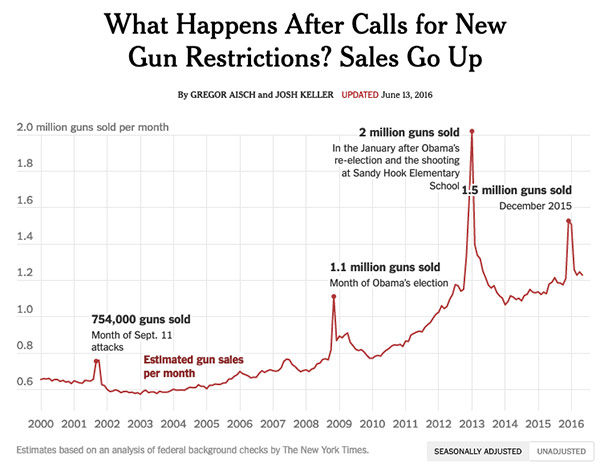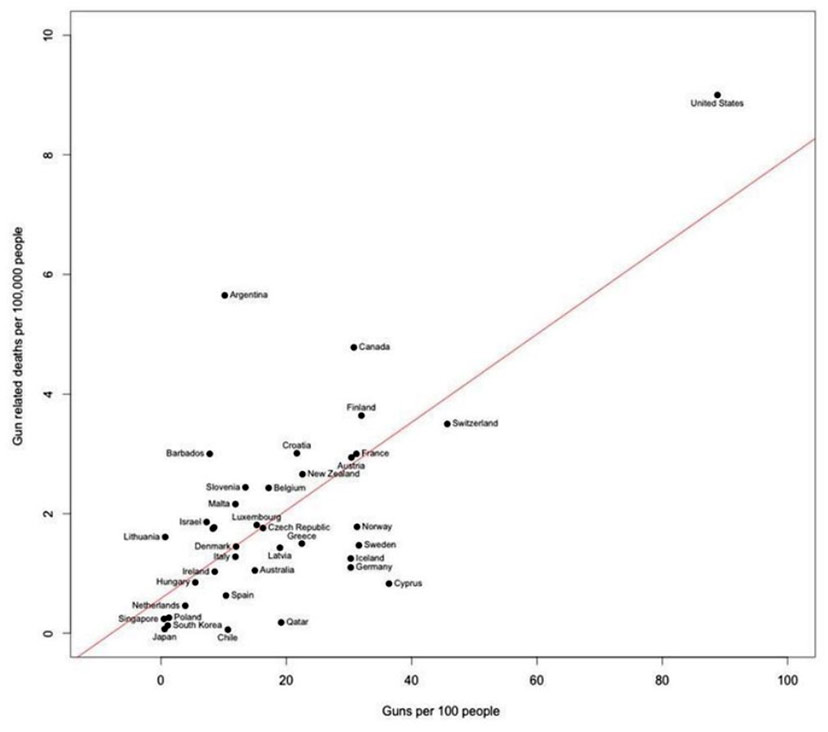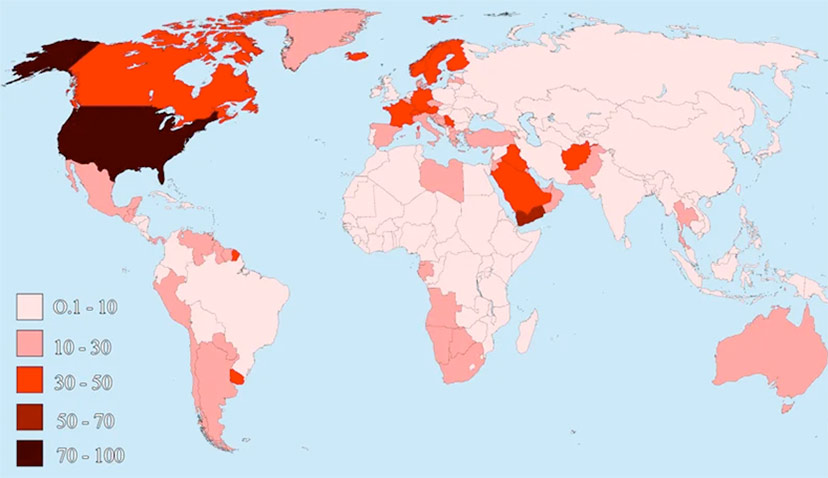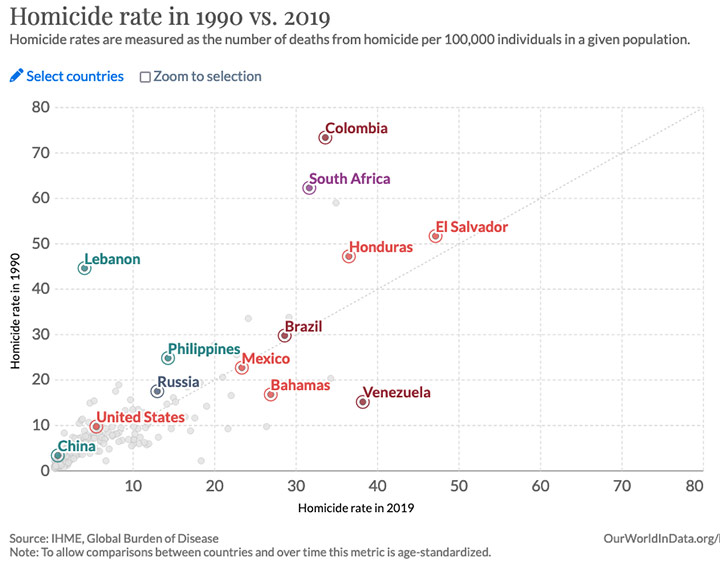Lankford (2014; 2015) and Meloy, Sheridan, and Hoffman (2008) found that most shooters desired fame and wished to emulate a previous mass shooter…
— from a 2016 analysis by Jennifer Johnston, PhD, and Andrew Joy, BS, shared by the American Psychological Association.
Is the truth about gun deaths in America… that it’s too complex to understand?
The role the media plays in the overall story might seem easier to understand. In concluding their analysis about the role media coverage plays in stoking the mass shooting epidemic in America, Jennifer Johnston and Andrew Joy wrote:
Another recommendation to the media is to refrain from sharing photos, writings, “manifestos,” personal likes and dislikes, family, work, and school history, or weapon preference of mass shooters with the public, especially given that many would-be killers identify in themselves similarities with the troubles of past killers, are inspired by their “bravery” and fame, are fascinated with the weapons and planning they did, and may even feel a competitive desire to surpass fatality counts of their homicidal idols…
So there’s one approach to addressing what feels to many of us an inexplicable curse. Stop glorifying — through national media coverage — the ‘accomplishments’ of typically young, typically white, typically troubled American men.
But it seems many journalists would rather blame the availability of guns, and a lack of restrictions on gun ownership.

We can’t question the fact that America is armed to the teeth, compared to certain other countries… and we see those comparisons rolled out following each mass shooting event, and with each report about the prevalence of gun-abetted suicide in the U.S.
Below is a graph that might look familiar, which I found on the World Economic Forum website, allegedly developed by the University of Washington. (I was unable to verify the source, because the link on WEForum.org led to a broken website.)
I don’t know what year this graph represents… but the United States definitely looks like an outlier… in this mix of countries…

Presumably, the chart includes three types of gun deaths: suicides, homicides, and accidental deaths.
Whoever created this graph (as noted, I was unable to verify its source) compared the United States to three dozen other countries from around the globe. Mostly, European and East Asian countries. Only two of the three dozen counties, Argentina and Canada, are located in the Western Hemisphere.
We’ll talk more about the Western Hemisphere in a moment.
This type of comparison seems fairly common, among media sources and organizations that believe gun ownership is highly correlated with gun violence. Often, the comparisons are with ‘developed countries’ in Europe and East Asia, where deaths from gun violence tend to be relatively uncommon.
Below is a map that was shared on the left-leaning website, Vox.com. (The map has disappeared, however, from its original location.) As we see, the only country that comes even close to the United States, in terms of per capita gun ownership, is Yemen, where factions have been fighting a civil war since 2014. The rate of gun ownership in Yemen is about 53 guns per 100 population, according to WorldPopulationReview.com.
Recent surveys suggest an ownership rate, here in the U.S., of about 120 guns per 100 people. As of 2022, we are a country with more than 393 million privately owned guns… more than one gun for every man, woman and child in America. Or so we are told, if we explore the Internet.
Disclosure: I don’t own a gun. I don’t belong to the NRA. According to Statista.com, the percentage of American households that possess at least one gun has hovered around 42% since 1972. The percentage in 2019, says Statista, was still about 42%. So about 58% of Americans currently live as I do, with no guns in the house. Obviously, the other 42% own more than their fair share.
Meanwhile, most countries around the world exhibit only a fraction of the per capita gun ownership we have here.

Most of Central America, for example, has relatively low rates of gun ownership. A recent online inventory lists Honduras, for example, with 14 guns per 100 population, and El Salvador and Guatemala with about 12 guns per 100 people… one tenth the per capita number here in the U.S.
Columbia has about 10 guns per 100 population. That’s roughly the average for the entire world. About 10 guns per 100 people.
Below is a graph that shows the murder rate of various countries. I found this graph on OurWorldInData.org.

The diagonal line through the center of the chart indicates a particular condition — a country that had the same murder rate in 1990 that it had in 2019. The countries that appear above the diagonal line saw their murder rates drop between 1990 and 2019. The countries below the diagonal line saw their murder rates worsen.
For example. The U.S., China, Russia and Columbia saw their murder rates improve between 1990 and 2019, as did the Philippines, Lebanon, Honduras and South Africa — in some cases, dramatically. The murder rate in the U.S. fell to half its 1990 rate, from about 10 murders per 100,000 population, to about 5 murders per 100,000.
The murder rate in Lebanon fell from about 44 per 100,000 in 1990 to about 4 per 100,000 in 2019.
(If you visit the OurWorldInData.org website, you can choose which countries will appear on the chart.)
We can note something fairly interesting going on, if we look at all these charts and maps. For one thing, I have included the Western Hemisphere. We are not comparing the U.S. to only European and East Asian counties. We are instead comparing the U.S. to some countries in our own hemisphere.
Like this:
United States, 120 guns per 100 population, murder rate 5 per 100,000 in 2019.
El Salvador, 12 guns per 100 population, murder rate 47 per 100,000 in 2019.
El Salvador has one-tenth the gun ownership per capita, and 9 times the murder rate.
United States, 120 guns per 100 population, murder rate 5 per 100,000 in 2019.
Columbia, 10 guns per 100 population, murder rate 34 per 100,000 in 2019.
Columbia has one-twelfth the gun ownership per capita, and 7 times the murder rate.
It would appear that, in the Western Hemisphere, the rate of gun ownership is not necessarily correlated with the murder rate.
When journalists or politicians want us to believe America has too many guns, and that the total number of guns and type of guns owned is the key reason for our murder rate, those journalists tend to compare the U.S. to certain European and East Asian countries. Belgium. Sweden. Germany. Japan. China. South Korea.
The Western Hemisphere will be ignored, and so will Africa… because, I assume, the gun violence in certain countries doesn’t fit the “too many guns” narrative.
Like most Americans, I am shocked and confused by the murders and suicides that take place in our country, all too regularly. But I think we haven’t yet wrapped our heads around the full explanation.
